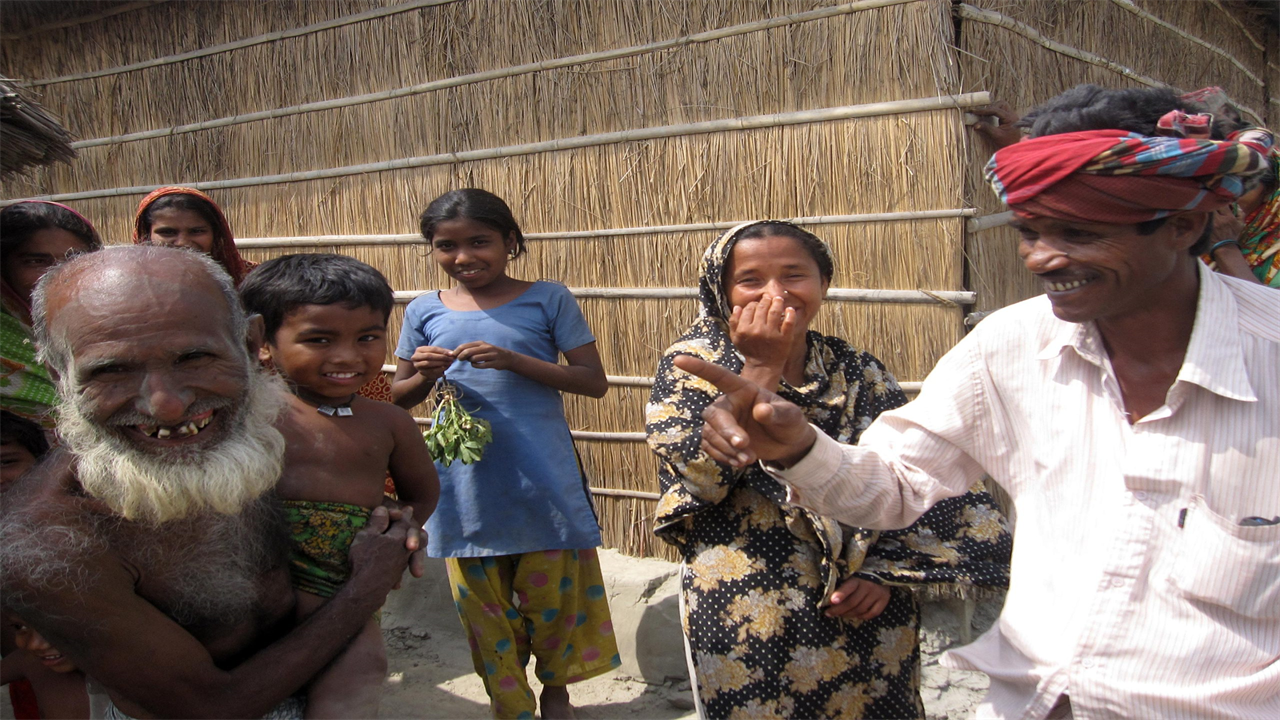Where COVID-19’s Death Grip Slipped (Briefly) – Surprising Findings by Columbia University Researchers
0 View
Share this Video
- Publish Date:
- 15 November, 2021
- Category:
- Covid
- Video License
- Standard License
- Imported From:
- Youtube
Tags

It is uncertain why overall deaths in rural Bangladesh fell at the start of the pandemic, even as urban deaths increased. Here, villagers on an island in the Jamuna River welcome visitors in 2016. Credit: Kevin Krajick/Earth Institute
In 2020, mortality rose worldwide, but fell in rural Bangladesh.
Geochemist Lex van Geen works at the intersection of public health and environmental risks. His research into natural arsenic contamination in groundwater has warned the world community for two decades about this insidious danger.
Van Geen, based at Columbia University’s Lamont-Doherty Earth Observatory, continued this work in Bangladesh in early 2020 in collaboration with economist Prabhat Barnwal of Michigan State University. The study aimed to compare the effectiveness of different ways of informing residents about the outcomes of well tests for arsenic, in order to reduce their exposure. As of January 2020, Van Geen worked with a team of professional enumerators assembled by Innovations for Poverty Action, Bangladesh, to survey 16,054 households in 135 rural villages.
On March 23, the team had to pause fieldwork as Bangladesh went into pandemic lockdown. But the wealth of demographic information already gathered gave Van Geen and his colleagues an idea. Rather than study arsenic, they decided to use the data to set up a comprehensive study of COVID-19 mortality in the same 135 villages.
Van Geen and his colleagues wanted to know whether the relatively low number of officially reported COVID-19 deaths in rural Bangladesh in 2020 could be the result of mass undercounting. To find out, his team, working remotely, called each home and family to ask a series of survey questions that would help them find out if and how the pandemic had affected these households. To reach that many households, the research team had the equivalent of a call center with more than 50 counters.
What they found, as just reported in the American Medical Association’s JAMA Network Open journal, was surprising.
Bangladesh COVID-19 cases (top) and deaths (bottom), January 2020-October 2021. During that period, the country recorded about 1.6 million cases and 28,000 deaths. Unlike in many other countries, the toll in 2020 was relatively modest for unknown reasons. Credit: Lex van Geen. Adapted from World Health Organization data
“We expected a large increase in deaths from COVID-19, as we learned to expect [from reports from the rest of the world]. For example, mortality in the United States in 2020 was on the order of 20 percent higher, which is huge,” says Van Geen.
That’s not what they discovered. Instead of the 11,256 households they were able to reach, there were 276 deaths between February and the end of October 2020 – slightly less than the 289 deaths reported in these villages during the same pre-pandemic months in 2019.
“For reasons deserving further investigation, it appears that in 2020 COVID-19 had no impact on rural Bangladesh mortality close to that of the pandemic in many other countries,” the study concludes. In fact, according to separate data from the government of Bangladesh, the death rate fell slightly, while in urban Bangladesh it rose by about 10 percent.
Jeffrey Shaman, a professor in the Department of Environmental Health Sciences and director of the Climate and Health Program at the Columbia University Mailman School of Public Health, studies the survival, transmission and ecology of infectious agents. He said Van Geen’s study has important lessons to learn about COVID’s ability to spread, and calls for more study.
“The idea that an area of Bangladesh will not have the 2020 outbreak is not solely a Bangladeshi issue. There are other places that have overcome this,” he said. Shaman noted that Vietnam, a country with a population of 98 million people, reported just 35 COVID deaths and fewer than 3,000 cases in 2020.
“The question is really: what have they done well? Were they lucky? Those are the things you would want to know from a public health point of view to inform what to do next,” Shaman said. “Why does this area [of Bangladesh] were spared during this period, so much so that they even had the benefits of reduced mortality?”
“It’s not that no people have died from COVID. According to anecdotal reports, rural Bangladesh deaths will increase in 2021,” says Van Geen. “Maybe in that second year the Delta variant spread more in rural areas,” he said. “[We] in 2020 were concerned that there would be massive underreporting. If there was under-reporting, it wasn’t from the countryside, because we have the data.”
Shaman says the data provides an opportunity for further research, especially if the Delta variant has indeed led to a confirmed increase in COVID deaths in this region. “It looks like they were either unable to maintain that level of control they had in 2020, or Delta was just too aggressive to keep it out,” Shaman said.
Reference: “Assessment of excess mortality and household income in rural Bangladesh during the 2020 pandemic” 15 Nov 2021, JAMA Network Open.
https://jamanetwork.com/journals/jamanetworkopen/fullarticle/10.1001/jamanetworkopen.2021.32777










